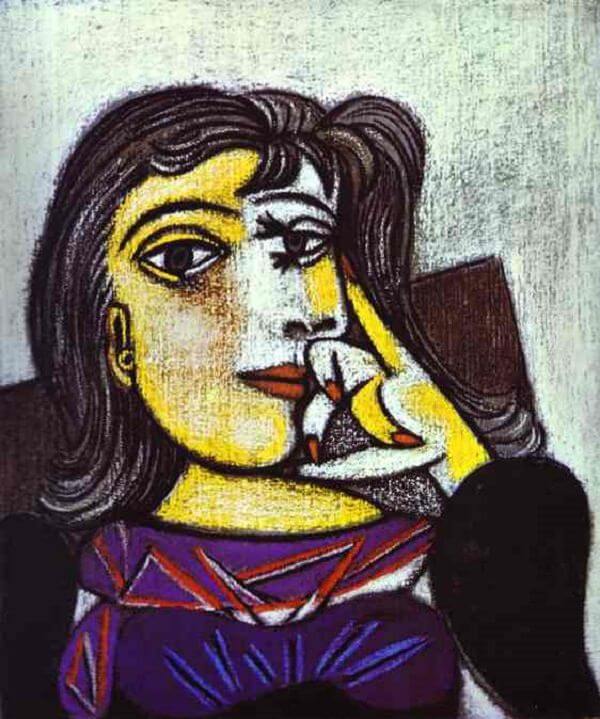Portrait of Dora Maar, 1937 by Pablo Picasso

A new woman came into Picasso's life in 1936, a young Yugoslavian photographer, Dora Maar, whose real name was Dora Markovic. She was a friend of the poet Paul Eluard, frequented Surrealist circles, and spoke Spanish. In Portrait of Dora Maar, 1937, Dora Maar is represented majestically seated in an armchair, smiling and resting her head on a long-fingered hand. The face is shown in a combined frontal and profile view, with a red eye and a green eye facing in different directions. For many people, these deformations are the very hallmark of Picasso's art. Yet, despite the distortions, or perhaps even because of them, Picasso achieved a striking resemblance that could be said to be "truer than life".
The deformations primarily serve an expressive purpose: the idea is less to remake reality than to express its possibilities, to capture all the aspects of the sitter.
Whereas Ingres used the traditional convention of the mirror to represent his model frontally and in profile, as in the portraits of Madame Moitessier and of the Comtesse d'Haussonville, Picasso resorted to a graphic synthesis, a pictorial fusion developed through his Cubist experiments."
Every possible pictorial means has been brought into play to "pin down" Dora Maar, to express her physical characteristics, her temperament, and the painter's vision of her. Certain features are specific to this model: the fingernails painted with red polish, the long, graceful hands, the pose, the black hair, the large, dark and staring eyes, the round, wilful chin, and the black, embroidered and laced corsage, which appears in another canvas in the Picasso Museum. The face is given volume by a play of colours and lighting that makes the cheek stand out like a peach. The expression is pleasant but distant; the eyes sparkle with life and intelligence. The pointed forms of the corsage and fingers suggest elegance and distinction. On the other hand, the cross-structures of the chair and of the embroidery, the squared pattern of the skirt, and the vertical and horizontal stripes of the background give the impression of a prison or convent cell, making it seem as if the model were enclosed within the confines of a narrow and cruel mental space.
















